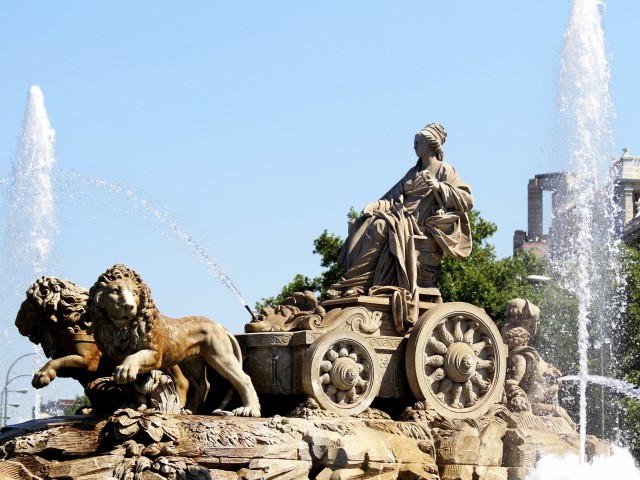- geral@fctouroperator.pt
- (+351) 249 538 565 (Cost according to your tariff)
- Go to FatimaCaminhos
Madrid
Madrid, the Spanish capital since the 16th century, is a city that does not sleep. During the "Golden Age" (XVI century), It became a big city, with the settlement of the court, and then the development of the city began. The capital of Spain was, from that moment, consolidated as a unified country, although it was still a very poor and simple compared to its European counterparts. It is during the late XVI and beggining of the XVII century that it seems that Madrid decided to appear to the world.
Today, the city of Madrid is a real jewel that enchants anyone.
The whole tourist will have to cross the two most emblematic avenues of the city: The Gran Via and the Paseo del Prado that extends until the Paseo de la Castellana. Among the obligatory stops is the Palacio Real and the Catedral de Almudena, built side by side. Strolling through the streets, discovering the Opera House, the San Miguel Market, the Plaza Mayor until it ends at the Puertas del Sol, is a trip in time and in the culture of Madrid. Amongst the historic buildings and tourist shops, the numerous cafés with their hams hang out, as the "jabón" is fundamental in the life of any local inhabitant.
But the visits are far from over ... Madrid is proud to pay homage to the most illustrious Spanish characters. Therefore, we find, for example, in the emblematic Plaza de España a monument dedicated to the writing Cervantes or in the Plaza de Colón a tribute to Christopher Columbus, a navigator who arrived "in the Americas".
And Madrid is a culture ... you can easily find theatres or cinemas, but it's the museums that hold the greatest exponent of Madrid's culture: the Padro Museum, one of the most important museums in the world, the Thyssen-Bornemisz Museum, the Queen Sofia Museum or the Real Academy of Fine Arts of San Fernando.
And it is in the Park of the retreat that it finds one more facet of the soul of the city. This green space is one of the meeting centres of the population.
